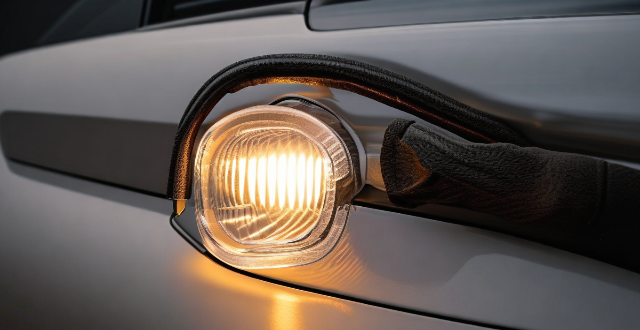The check engine light, also known as the malfunction indicator lamp (MIL), is a warning light that illuminates on the instrument panel of your car when there is a problem with one or more of the vehicle's systems. The light can come on for a variety of reasons, ranging from minor issues to more serious problems that require immediate attention. Common causes of the check engine light include a loose or faulty gas cap, worn-out spark plugs or ignition coils, oxygen sensor malfunction, mass airflow sensor issues, catalytic converter problems, fuel injector issues, emission system leaks, and engine misfires. If your check engine light comes on, it is important to take action by checking your gas cap, monitoring your vehicle's performance, consulting your owner's manual, having your car diagnosed by a qualified mechanic, and not ignoring the check engine light. Addressing the issue promptly will help keep your car running smoothly and prevent costly repairs in the future.

What Does It Mean When the Check Engine Light Comes On in My Car?
The check engine light, also known as the malfunction indicator lamp (MIL), is a warning light that illuminates on the instrument panel of your car. It is designed to alert you that there is a problem with one or more of the vehicle's systems. The light can come on for a variety of reasons, ranging from minor issues to more serious problems that require immediate attention. Here are some possible causes of the check engine light:
Common Reasons for the Check Engine Light
- Loose or Faulty Gas Cap: A loose or faulty gas cap can cause fuel vapors to escape, triggering the check engine light.
- Spark Plugs or Ignition Coils Need Replacing: Worn-out spark plugs or ignition coils can cause misfires, which will activate the check engine light.
- Oxygen Sensor Malfunction: The oxygen sensor measures the amount of unburned oxygen in the exhaust and sends this information to the engine control module (ECM). If the sensor is not working properly, it can cause the check engine light to come on.
- Mass Airflow Sensor Issues: The mass airflow sensor measures the amount of air entering the engine and sends this data to the ECM. A faulty sensor can cause poor performance and trigger the check engine light.
- Catalytic Converter Problems: The catalytic converter reduces harmful emissions from the exhaust system. If it is damaged or failing, it can cause the check engine light to illuminate.
- Fuel Injector Issues: Clogged or dirty fuel injectors can cause poor engine performance and trigger the check engine light.
- Emission System Leaks: Leaks in the emission control system can cause the check engine light to come on.
- Engine Misfires: Misfires occur when one or more cylinders fail to ignite properly, causing a drop in engine power and efficiency. This can also trigger the check engine light.
What To Do When the Check Engine Light Comes On
If your check engine light comes on, here are some steps you should take:
1. Check Your Gas Cap: Make sure your gas cap is tight and secure. If it is loose or faulty, tighten it or replace it if necessary.
2. Monitor Your Vehicle's Performance: Pay attention to how your car is running. If you notice any unusual sounds, smells, or performance issues, take your car to a mechanic immediately.
3. Consult Your Owner's Manual: Your owner's manual may have specific instructions on what to do if your check engine light comes on. Follow these guidelines carefully.
4. Have Your Car Diagnosed by a Qualified Mechanic: If the check engine light stays on after checking your gas cap and monitoring your car's performance, take your car to a qualified mechanic for diagnosis and repair. They will use specialized equipment to read the diagnostic codes stored in your car's ECM and determine the root cause of the problem.
5. Do Not Ignore the Check Engine Light: Ignoring the check engine light can lead to more serious problems down the road, such as engine damage or increased emissions. Addressing the issue promptly will help keep your car running smoothly and prevent costly repairs in the future.